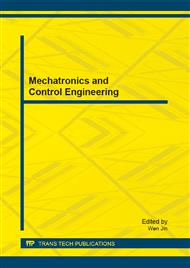p.409
p.419
p.425
p.430
p.436
p.440
p.446
p.451
p.457
EMC Measurement in a Reverberation Chamber
Abstract:
A reverberation chamber, which is a test facility for various electromagnetic compatibility tests, uses a stirrer to generate a uniform electric field inside it. However, a stirrer is a big unit and has difficulties in maintenance. This paper adopted an idea of a diffuser from acoustics to overcome the problems of a stirrer and presents a substitution effect of a diffuser for a stirrer. To validate the substitution effect of a diffuser, a diffuser and a reverberation chamber for 3.0-5.0 GHz band are designed and fabricated. And the real measurement for analyzing the electric field uniformity in a reverberation chamber is done. The measurement results show that the reverberation chamber with a diffuser satisfies the international standard requirement.
Info:
Periodical:
Pages:
436-439
Citation:
Online since:
July 2013
Authors:
Price:
Сopyright:
© 2013 Trans Tech Publications Ltd. All Rights Reserved
Share:
Citation:


